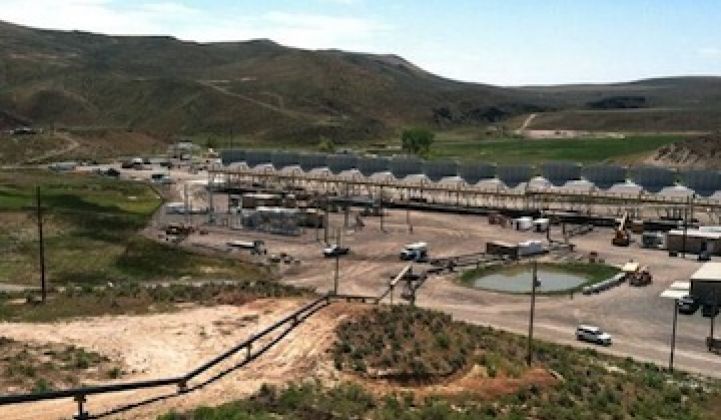Here’s a U.S. Department of Energy renewable energy loan guarantee story unlikely to gain heavy play on Fox News. It doesn’t fit the narrative over there, where I do believe Karl Rove is still making the case for Romney carrying Ohio.
This is another story of government assistance leading to the production of clean energy, which, along with job creation, was the intent of the stimulus-spawned 1703 program, and much more often than not -- Solyndra notwithstanding -- has been the result.
U.S. Geothermal reported last week that two of three power plant modules at the Neal Hot Springs project in Malheur County, Ore. are producing up to 16.8 megawatts of power, putting the project on track for beginning commercial operation before the end of the year.
Neal Hot Springs is supported by a $97 million loan guarantee that closed in February 2011. That was intended to represent two-thirds of the price tag for the project, but additional drilling costs and modifications in plant controls and the cooling mechanism bumped the tab up $14.6 million to reach a total of $143.6 million, according to U.S. Geothermal. An equity partner in the project, Enbridge of Canada, came forth with the needed funding, boosting its stake in the project to 27 percent.
The DOE says the project is expected to put out about 180,000 megawatt-hours of power annually, which will go to Idaho Power (the plant is in east Oregon, just 85 miles west of Boise, Idaho).
To get the power flowing to Idaho, U.S. Geothermal says there are just a few more steps it needs to take: “Additional minor adjustments will continue to bring the two modules offline intermittently for various periods before they are deemed ready for commercial operation,” the company said. In addition, “The contractor is also performing final system checks of Module 3 in preparation for starting and synchronizing its output to the grid.”
There’s a bit of an interesting story behind Neal Hot Springs: Back in the 1970s, Chevron took a stab at developing it, but after putting some holes in the ground and seeing what was what, the company determined that it just wasn’t hot enough to pay off. U.S. Geothermal says an advanced technology -- binary cycle supercritical power production -- makes the project viable.
The key difference over conventional methods is that instead of driving a generator by simply using the underground heat to vaporize an organic working fluid (causing it to expand as vapor), the fluid goes into a heat exchanger above its critical pressure. In this supercritical state, the working fluid expands gradually, extracting more heat than simple vaporization. The result is increased energy output from a given amount of heat compared to conventional systems.
The use of this supercritical binary cycle technology points to another benefit of the loan guarantee program, at least in this case: By demonstrating the technology’s viability on a commercial scale, the DOE and the geothermal industry hope the door will be opened to private financing of such ventures.
By the way, to see how the Neal Hot Springs project fits into the DOE’s loan guarantee profile, check out its roster of projects. You can see why despite the Solyndra debacle, an independent analysis of the loan guarantee program determined that it actually “holds less than the amount of risk envisioned by Congress when it created and funded the program.” Also, a Bloomberg Government analysis found that since nearly 90 percent of the loan program was invested in energy projects that had buyers for the power they will produce -- like Neal Hot Springs -- the risk of big losses was minimal.
***
Editor's note: This article is reposted in its original form from EarthTechling. Author credit goes to Pete Danko.



